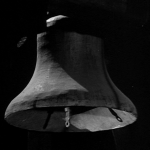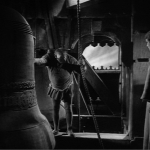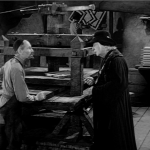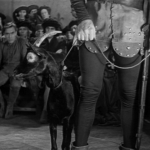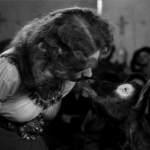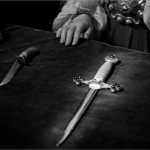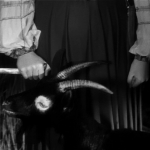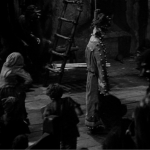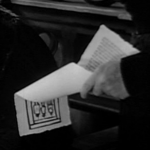The first aspect of Mise-en-Scene of the 1939 “The Hunchback of Notre Dame” that I’m going to look at are the Props. Why Props? Well to put it nicely it’s the least impressive aspect of the film. This film has very little in terms of props. Fact is, some definitions of Mise-en-scene lump props and setting together and while some of the “props” in this movie are more like set pieces, the sets of this movie need their own post. So anyway on with the Props.
The film being a period has tons of props to help create the look and feel of Paris in the late 1400’s but only a hand full of these props are actually important for the characters and the story. Two of the most important “props” (I would consider them more like set pieces, but I’ll address them here) are the printing press and the Bells. Being a Hunchback of Notre Dame film there must be Bells. The Bells in this film are very impressive they look like cathedral bells. The bells that Charles Laughton (Quasimodo) had to ring were roughly about 100 pounds (true factoid – the huge bell Emmanuel at Notre Dame is about 13 tons). There not much to say on the Bells in this film they look like huge cathedral bells the sound like Bells but that’s because the sound recording is bells from Notre Dame..
Then there is the printing press, the movie symbol for progress, again this thing is so big that it more a set piece than a prop and again I can’t say to much on it it. Like the bells, it is well executed and looks on point to how Gutenberg’s press looked. The printing press does have a major importance in the film but the film hits you over the head with this fact every chances it gets. So it really does become annoying.
Now the props that were more than set pieces, the props with purpose. Starting with the Goat, Aristotle or the miracle goat. Aristotle can perform math much like his counterpart Djali (from the book). Aristotle is the main reason why Esmeralda is on trial for witchcraft. The poor goat gets the short end here, Aristotle is brought in because I guess the script writers forgot that there was a goat and that the goat was a main character in the book and added it at the last second. So Aristotle is brought in and you never see or hear mention of him after Esmeralda is recused. So the purpose of the Goat is to solidify Esmeralda as potential witch but here the thing, It’s never really clear to whom Aristotle belongs. Gringoire seems to have more to do with Aristotle than Esmeralda. Gringoire introduces him and Gringoire has concern for him (he brings him a cabbage while Aristotle and Esmeralda are in jail). Aristotle just seems to exist to bring trouble to Esmeralda. Aristotle takes off for Esmeralda just before the murder and lingers with her and during the trial, Aristotle nuzzles her which is further the witchcraft accusation. It also seems like that Gringoire both named Aristotle and more than likely taught him to count. But since Aristotle’s backstory is non existent the audience is left just to assume Aristotle is Esmeralda’s goat, and since Aristotle comes and goes and his one function is to implicate Esmeralda as witch for medieval types during the trial. Therefore the goat is a prop and I wish they had gotten a white goat, apart from accuracy to the book, a white goat would have looked better for a black and white film.
Another prop used to showcase Esmeralda’s guilt are the daggers. There are two daggers, Esmeralda’s and Louis’. Esmeralda’s dagger is the “murder weapon” though when Phoebus is found dead and Esmeralda is found with dagger in hand with Aristotle her Dagger is clean. Louis’ dagger was used during the “Trial by Ordeal” that he subjected Esmeralda to in an effort to clear her of murder but she failed. Unlike the Esmeralda’s dagger, Louis is used to show that he a good king who at least tried to help, but further than that the dagger does nothing.
Other props in the movie that are featured and slightly important that I’ll mention quickly are Bell Boy, the pamphlet and a whip. The Bell Boy is used in the Court of Miracles to test Gringoire thief skills, he fails to steal from the prop and as a result marries Esmeralda and they fall in love. Paper and books are seen throughout the movie, they go hand-in-hand with the printing press that is a symbol of progress. The big piece of paper is Gringoire’s pamphlet that help pardon Esmeralda (though another piece of paper damned her, the nobels’ petition but they didn’t use the press so their old fashion and therefore they suck) Lastly, the Whip, Quasimodo is whipped on the pillory and when Esmeralda gives him water and pity, he fall in love with her. The whip is symbol for oppression and since this film is about modernization and progress the whip serve as a counterpoint to have crappy the medieval time period was.
More on Mise-en-scene next time – Costumes

